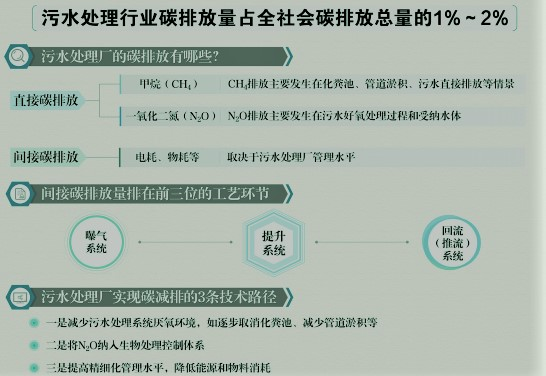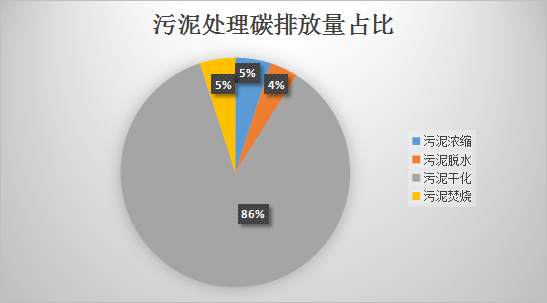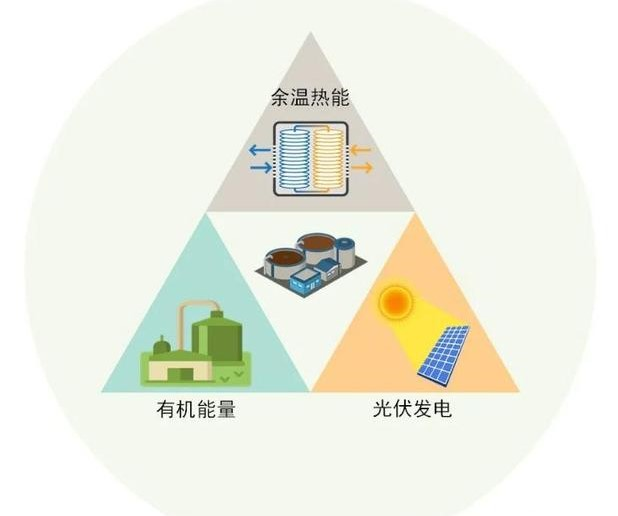How to achieve carbon neutrality in sewage and sludge treatment?
From: This site Time: 2022.07.25 View:
On October 24, 2021, the CPC Central Committee and The State Council issued the Opinions on Implementing the New Development Concept to achieve Carbon peak and Carbon Neutrality in a complete, accurate and comprehensive manner. It can be seen that achieving carbon neutrality has become an important work at the national level. As an active participant in the implementation of the Paris Agreement, China has made it clear at the UN General Assembly that it will strive to peak carbon dioxide emissions by 2030 and achieve carbon neutrality by 2060. As a firm supporter of the national policy, Shuote technology reduces the carbon emissions generated in sewage and sludge treatment while improving the utilization efficiency of sewage and sludge resources, and contributes to the battle of carbon neutralization for the motherland.

First.Carbon emission in sewage and sludge treatment process
The carbon emission in sewage and sludge treatment process is mainly divided into direct carbon emission and indirect carbon emission, while the direct carbon emission mainly comes from the release of CH4 and CO2 in biological reaction and sludge drying, while the indirect carbon emission in sewage and sludge treatment is mainly power consumption and pharmaceutical consumption in the production process. Some experts point out that the carbon emissions of sewage and sludge treatment industry account for 2% to 3% of the total social carbon emissions. Therefore, improving the sewage and sludge treatment process can reduce carbon emissions very well.


Second.How to achieve carbon neutrality in sewage and sludge treatment?
By traditional, sewage and sludge treatment process, because of the open type treatment process and lack of tail gas treatment of carbon from inevitable, and to realize the science and technology with high pressure membrane as the core technology of high salt wastewater treatment process, process simple, reduce or avoid adding chemical agents, can significantly reduce the sewage and sludge treatment process of carbon in the releasing.
Sewage and sludge are actually carriers of resources and energy. To achieve carbon neutrality, the most important point is to make use of the energy in sewage and sludge. The energy contained in sewage and sludge is first of all organic matter (COD), and the simplest way to recover this part of energy is to implement anaerobic digestion of the sludge generated after sewage treatment, to produce methane for combined heat and power generation, so as to reduce the sewage plant's demand for external energy, and then indirectly reduce CO2 emissions.
Theoretically speaking, the organic energy contained in domestic sewage can reach 9-10 times of the energy consumed by sewage treatment. It is also feasible to remove the energy loss and the part that cannot be fully utilized and offset the energy consumed to achieve carbon neutrality. The biological treatment tank, primary sedimentation tank, secondary sedimentation tank and other units of sewage treatment plant have a large surface area, which creates the necessary site conditions for solar photovoltaic power generation. In addition, municipal sewage itself has a stable flow, sufficient water, with residual temperature and other characteristics, if the sewage treatment plant to introduce water source heat pump technology for heat extraction and recovery, it can further improve the utilization of resources.

Third.conclusions
How to achieve carbon neutrality in sewage and sludge treatment?
By traditional, sewage and sludge treatment process, because of the open type treatment process and lack of tail gas treatment of carbon from inevitable, and to realize the science and technology with high pressure membrane as the core technology of high salt wastewater treatment process, process simple, reduce or avoid adding chemical agents, can significantly reduce the sewage and sludge treatment process of carbon in the releasing.
Sewage and sludge are actually carriers of resources and energy. To achieve carbon neutrality, the most important point is to make use of the energy in sewage and sludge. The energy contained in sewage and sludge is first of all organic matter (COD), and the simplest way to recover this part of energy is to implement anaerobic digestion of the sludge generated after sewage treatment, to produce methane for combined heat and power generation, so as to reduce the sewage plant's demand for external energy, and then indirectly reduce CO2 emissions.
Theoretically speaking, the organic energy contained in domestic sewage can reach 9-10 times of the energy consumed by sewage treatment. It is also feasible to remove the energy loss and the part that cannot be fully utilized and offset the energy consumed to achieve carbon neutrality. The biological treatment tank, primary sedimentation tank, secondary sedimentation tank and other units of sewage treatment plant have a large surface area, which creates the necessary site conditions for solar photovoltaic power generation. In addition, municipal sewage itself has a stable flow, sufficient water, with residual temperature and other characteristics, if the sewage treatment plant to introduce water source heat pump technology for heat extraction and recovery, it can further improve the utilization of resources.

First.Carbon emission in sewage and sludge treatment process
The carbon emission in sewage and sludge treatment process is mainly divided into direct carbon emission and indirect carbon emission, while the direct carbon emission mainly comes from the release of CH4 and CO2 in biological reaction and sludge drying, while the indirect carbon emission in sewage and sludge treatment is mainly power consumption and pharmaceutical consumption in the production process. Some experts point out that the carbon emissions of sewage and sludge treatment industry account for 2% to 3% of the total social carbon emissions. Therefore, improving the sewage and sludge treatment process can reduce carbon emissions very well.


Second.How to achieve carbon neutrality in sewage and sludge treatment?
By traditional, sewage and sludge treatment process, because of the open type treatment process and lack of tail gas treatment of carbon from inevitable, and to realize the science and technology with high pressure membrane as the core technology of high salt wastewater treatment process, process simple, reduce or avoid adding chemical agents, can significantly reduce the sewage and sludge treatment process of carbon in the releasing.
Sewage and sludge are actually carriers of resources and energy. To achieve carbon neutrality, the most important point is to make use of the energy in sewage and sludge. The energy contained in sewage and sludge is first of all organic matter (COD), and the simplest way to recover this part of energy is to implement anaerobic digestion of the sludge generated after sewage treatment, to produce methane for combined heat and power generation, so as to reduce the sewage plant's demand for external energy, and then indirectly reduce CO2 emissions.
Theoretically speaking, the organic energy contained in domestic sewage can reach 9-10 times of the energy consumed by sewage treatment. It is also feasible to remove the energy loss and the part that cannot be fully utilized and offset the energy consumed to achieve carbon neutrality. The biological treatment tank, primary sedimentation tank, secondary sedimentation tank and other units of sewage treatment plant have a large surface area, which creates the necessary site conditions for solar photovoltaic power generation. In addition, municipal sewage itself has a stable flow, sufficient water, with residual temperature and other characteristics, if the sewage treatment plant to introduce water source heat pump technology for heat extraction and recovery, it can further improve the utilization of resources.

Third.conclusions
How to achieve carbon neutrality in sewage and sludge treatment?
By traditional, sewage and sludge treatment process, because of the open type treatment process and lack of tail gas treatment of carbon from inevitable, and to realize the science and technology with high pressure membrane as the core technology of high salt wastewater treatment process, process simple, reduce or avoid adding chemical agents, can significantly reduce the sewage and sludge treatment process of carbon in the releasing.
Sewage and sludge are actually carriers of resources and energy. To achieve carbon neutrality, the most important point is to make use of the energy in sewage and sludge. The energy contained in sewage and sludge is first of all organic matter (COD), and the simplest way to recover this part of energy is to implement anaerobic digestion of the sludge generated after sewage treatment, to produce methane for combined heat and power generation, so as to reduce the sewage plant's demand for external energy, and then indirectly reduce CO2 emissions.
Theoretically speaking, the organic energy contained in domestic sewage can reach 9-10 times of the energy consumed by sewage treatment. It is also feasible to remove the energy loss and the part that cannot be fully utilized and offset the energy consumed to achieve carbon neutrality. The biological treatment tank, primary sedimentation tank, secondary sedimentation tank and other units of sewage treatment plant have a large surface area, which creates the necessary site conditions for solar photovoltaic power generation. In addition, municipal sewage itself has a stable flow, sufficient water, with residual temperature and other characteristics, if the sewage treatment plant to introduce water source heat pump technology for heat extraction and recovery, it can further improve the utilization of resources.


 All rights reserved Sichuan ICP No. 12019139 Sichuan Public Network Security No. 44030502001115
All rights reserved Sichuan ICP No. 12019139 Sichuan Public Network Security No. 44030502001115


